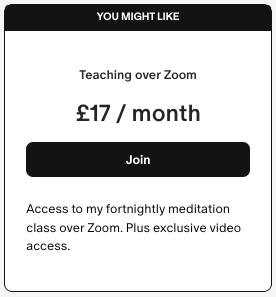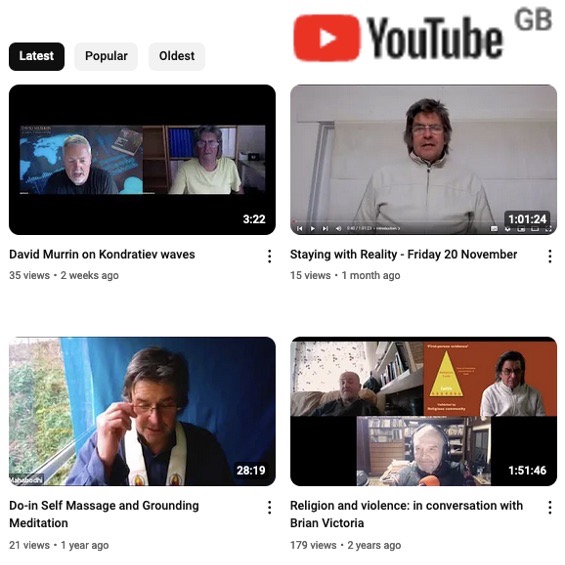Compassion and its ‘enemies’
Below is an excerpt from my forthcoming book… © Mahabodhi Burton 10 minute read Diving into the Preface of ‘The Buddhas and Global Governance,’ this excerpt digs into the intricate dynamics of compassion and its adversaries. Building upon the narrative of ‘ The Twitter Files,’ it navigates through the suspension of Jordan Peterson from Twitter, shedding light on the complexities surrounding bringing the right amount of compassion to transgender issues. Join me as I embark on a journey towards understanding the nuances of compassion and where the Middle Way lies. The ‘banning’ of Jordan Peterson from Twitter The ‘great sin,’ however, on ‘Old Twitter’ was to comment on a transgender issue: as Jordan Peterson found to his cost when he was suspended[1] from Twitter in July 2022 for allegedly violating their rules against hateful conduct. Mikhaila Peterson said her father would be off the platform until he deleted the tweet. Conservative commentator David Rubin commented on the incident, “The insanity continues at Twitter. @jordanbpeterson has been suspended for this tweet about Ellen Page. He just told me he will ‘never’ delete the tweet. Paging @elonmusk.”’ [2] only to be suspended himself, at which, ‘Rubin and Mikhaila called on Tesla CEO Elon Musk – who recently bid $44 billion to take the platform over in efforts to promote free speech.’[3] Musk eventually took over Twitter in October 2022. ‘The crime’ Peterson had claimed in a tweet on 24 June 2022 that ‘The Umbrella Academy’ star Elliot Page, who formerly went by the name of Ellen, and who had announced his transition in December 2020, had his ‘breast removed by a criminal Physician.’[4] Peterson had said ‘her’ instead of ‘his,’ tweeting, ‘Remember when pride was a sin? And Ellen Page just had her breasts removed by a criminal physician.’[5] (Emphasis added) Peterson explains his thinking behind the tweet: ‘Page is a star, and she advertised her transformation and made the claim that this is revolutionized her life and then she displayed her new body in a public forum and got 1.7 Instagram likes for it, and probably enticed, let’s say, one young girl who is confused into becoming sterile, which is one too many for me.’[6] Peterson’s tweet, along with other controversial tweets and statements in interviews, led the Ontario College of Psychologists to order him to undertake a social media coaching program; he appealed the decision, and lost:[7] ‘Dr. Peterson is subject to regulation by the College of Psychologists of Ontario, which received complaints about Dr. Peterson’s public statements. Following an investigation into those of Dr. Peterson’s statements alleged to be “transphobic, sexist, [and] racist,”...
The Metta Bhavana
Below is an excerpt from my forthcoming book… © Mahabodhi Burton 9 minute read This excerpt is from the chapter ‘Buddhist Practice’ and it explores the metta bhavana meditation practice in its practical aspect. It follows on from ‘Day-to-day mindfulness.’ The Metta Bhavana I want to move on now to the Metta Bhavana: the ‘root’ meditation in a set of four called the Brahmaviharas or ‘divine abodes.’ Metta is Pali for ‘Universal Loving Kindness’ and bhavana means cultivation.’ I explored the principles behind the emotion in Chapter 1; and in ‘Kindness as Constructive Imagination.’ It is worth reiterating that metta is an emotion and that the practice consists in whatever creative action will systematically bring that emotion about. It doesn’t matter, for instance, that we care about or are sincere in our wish to develop loving kindness: this may be no more than virtue-signalling (to ourselves and others) what a good person we would like to be. No, what matters is that we are effective in our practice and come to actually care what happens to ourselves and every ‘other’ in a real, powerfully passionate and robust way. The method doesn’t really matter: it is all about trying out different things until something works. There are, therefore, a few common methods that people tend to use to stimulate the emotion: Reciting the phrases: May I be well; May I be happy; May I be free from suffering; May I make progress’ and waiting for an appropriate response Imagining the person at their best; or during a happy time, and wishing on them a similar experience today Using imagery: such as imagining a flower opening in our heart; or a warm colour, symbolizing love, flooding the world And, based the idea explicated in ‘Kindness as Constructive Imagination:’ that our emotional response to a person in conditioned by our view of what they are, I suggest a further method: Aligning our view of each person with what they actually are: a living being, with hopes and fears, who is sensitive to their experience, who wants to be happy and not to suffer Structured practice or ‘radiation method’ There are two basic ways to do the practice: the structured practice in five stages or the ‘radiation method.’ In the former loving kindness is cultivated firstly towards oneself; then towards a good friend; a neutral person; a person we find difficult; and in the final stage we extend it out to encompass more and more living beings. In the radiation method we simply radiate it out to living beings in all directions. Here then are instructions for the practice of...
Mental Proliferation (Papanca)
Below is an excerpt from my forthcoming book… © Mahabodhi Burton 10 minute read This excerpt is from the chapter ‘Augmentative Conditionality; The Spiral Path‘ and it follows on from an exploration of the early stages of that path. Mindfulness of mind As well as cultivating the appropriate creative emotional response to feeling, the monk works the other aspects of his mind so that they too conduce to skilfulness; he trains his attention to be sharp and ever present. And through reflecting on the veracity of his thoughts, he trains them to be in line with reality and thus to fostering universal well-being. Thought and reflection In the Dvedavitakka Sutta the Buddha says; ‘Whatever a monk keeps pursuing[1] with his thinking and reflecting, that becomes the inclination of his mental states and emotions (his citta)’[2] We probably all recognize that the more we reflect upon an idea, the more that thought becomes a habit: the Buddha warned the Kalama people against adopting ideas just because: They have heard them repeatedly They have been handed down in a tradition or lineage Of hearsay They see a scripture as authority Of sophistry or logical inference Of prolonged consideration Of getting carried away by a view they identify with [alternatively, ‘nor on indulgence in the pleasure of speculation’] Someone made a plausible impression on them [alternatively, ‘nor on (something that) looks plausible’] They have respect for a certain spiritual teacher[3] He taught instead that only when they know in their hearts that an idea leads to well-being and not to suffering should they adopt it: the list above indicates that the reason why we adopt one idea over another is often more down to habit, emotion or association than to such conscious examination. Vitakka and vicara Two Buddhist terms are in common use which are associated with thought: vitakka (Pali; Sanskrit: vitarka) and vicara (Pali and Sanskrit.) Opinions differ as to how best to translate them: many suggest ‘thinking of’ and ‘thinking about’ respectively. In my own view, they are best translated as ‘opining’ (in the sense of holding an opinion) and ‘reflecting’[4] (however, as they also refer to responses to imagery, in this case they might be rendered ‘visioning’ and ‘imagining’.) Some, like Leigh Brasington,’[5] argue that the terms are synonymous in that they both mean ‘thinking: I think this reasoning is lazy; some argue that in the first dhyana each is only concerned with attention,[6] but there is good reason to think otherwise: the most cogent explanation is that vitakka represents the capacity of the mind to turn towards a view (the Pali vi- means ‘split or...
Day-to-day mindfulness
Below is an excerpt from my forthcoming book… © Mahabodhi Burton 4 minute read This excerpt is from the chapter ‘Buddhist Practice’ and it explores day-to-day mindfulness. It follows on from ‘Mindfulness of Breathing: focus on detail.’ Day-to-day mindfulness The Mindfulness of Breathing develop awareness within the most conducive conditions; that mindfulness can then be applied to our day-to-day activities. In terms of mindfulness of the body we need to try and preserve the principles we learned in the Grounding Meditation, by attending to the state of our body and looking after it as we go about our daily business. Our body needs to be a vehicle that we are looking after, that will thus support our mind and emotions in their activity to bring about happiness. It is helpful if we are mindful of our body as we go about in the world, by moving in a way in which our spine is balanced and takes our weight as we move, and by minimizing the amount of muscular tension employed in our bodily activities. Our bodily use would be inspired by ideas developed by F. M. Alexander in the Alexander Technique; ideally, we would retrain ourselves to move naturally, as children and animals do, with grace and poise; at the very least, we would look after our body through regular trips to the gym or through taking Epsom salt baths. Other aspects of day-to-day mindfulness might include organizing our lives better so that for instance we know where we have left our car keys, as outlined in Maitreyabandhu’s Life with Full Attention. In general, any mental action or remembrance that helps us avoid unnecessary suffering is an aspect of day-to-day mindfulness. Certainly, it can help our mind feel more secure, and thus reduce mental suffering, when we ‘spell out’ to ourselves our situation; where we are, what we are doing, how we are feeling, and so on. This activity of ‘noting’ is a key tool in Theravada Buddhist meditation where the practitioner endeavours to make everything more conscious and it certainly has its use, although it does not cover every aspect of practice. In day-to-day mindfulness there is a sense in which we need to be appreciating our surroundings for the experience they have to offer, as illustrated in the ‘raisin exercise’ commonly used in week one of a secular mindfulness course. We come out of automatic pilot and consciously experience what is in front of our noses, thus maximizing the pleasure of sensory experience, though not at the expense of other sources of happiness–for ourselves or others. Mindfulness of the body’s posture and physical movement The monk...
Mindfulness of Breathing: focus on detail
Below is an excerpt from my forthcoming book… © Mahabodhi Burton 2 minute read This excerpt is from the chapter ‘Buddhist Practice’ and it explores the mindfulness of breathing meditation practice. In this twelve minute meditation, I introduce the idea of focusing on the detail in the breath: as only way of really knowing that we are being aware; and to give ourselves a break from our day-to-day concerns. It follows on from ‘Mindfulness of Breathing.’ VIDEO LEAD THROUGH Following the details of the breath In ‘digging into’ and trying to understand the principle behind the Mindfulness of Breathing myself, I came across another way of doing the practice, and like all methods it has benefits and drawbacks. One thing that I noticed with people doing the four-stage practice was that I thought it was far too easy to sit say for twenty minutes going through the stages in a way where one was vaguely aware of the breath as ‘an overall thing’ while missing the specifics of the experience, and at the end of the meditation one’s mind was not that sharper than when one began. Some benefits would be gained, for instance one would probably become more ‘collected’ around the breath—the contents of one’s psyche more integrated, as well as calmed in general, but one’s mind would not necessarily be that much more brighter and alert than it was before, and brightness and alertness are qualities contributing to dhyana and to Awakening in general. While practising the Mindfulness of Breathing in this way can be effective, there is a danger that our awareness can lack specificity, and hence sharpness. The purpose of the Mindfulness of Breathing is to develop mindfulness and awareness. In a real sense the object of the meditation is not the breath but awareness itself. We need to know whether we know what is happening with the breath (‘knowing whether we know’ is called ‘Reflexive Self-Consciousness’). If we can say in any moment that we are experiencing particular sensations, then we know that (in that moment) we are being aware. If there is any doubt, and we cannot say we know, therefore we are unaware. The Sutta’s original instructions ask the monk to ‘know whether the breath is long or short.’ This indicates watching out for the details of the breath. If we are only generally aware that we are breathing, our awareness may be of an idea of the breath, rather than the breath itself. But if we know what the details of the breath are, we know we are present to our experience. A brief meditation following the details of the...







 Users Today : 206
Users Today : 206 Users Yesterday : 110
Users Yesterday : 110 This Month : 846
This Month : 846 Total Users : 16003
Total Users : 16003
